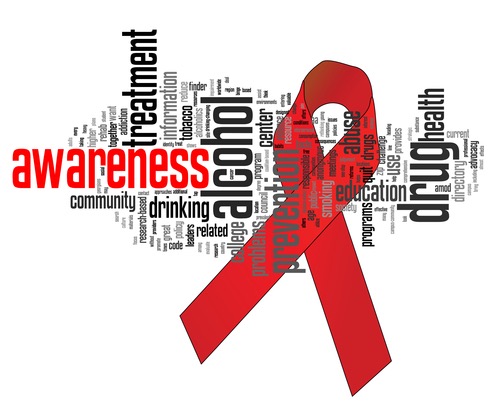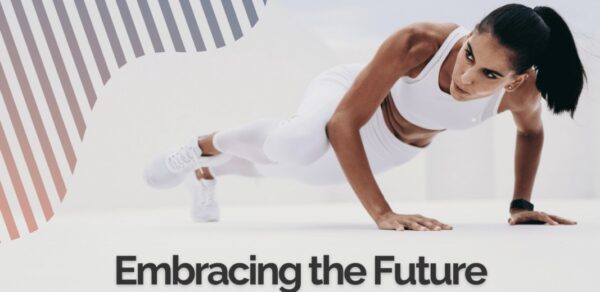
As we stride into the future, one trend that’s not just making waves but becoming an integral part of our daily lives is wearable technology. The popularity of fitness trackers and smartwatches is set to soar even higher in 2024, becoming indispensable tools for those keen on optimizing their well-being.
Smart Fitness Tracking
Wearable technology serves as a personalized wellness companion, allowing individuals to effortlessly monitor their fitness journey. From step counts to heart rate monitoring, these devices offer real-time insights into physical activity, empowering users to make informed decisions about their health.
Motivation at Your Fingertips
What sets wearable tech apart is its ability to keep users motivated. Whether it’s reaching daily step goals, beating a personal best, or receiving real-time workout feedback, these devices provide the encouragement needed to stay on track and achieve fitness milestones.
Healthy Habits, Intelligent Living
Beyond mere fitness tracking, wearable technology champions a lifestyle of intelligent living and healthy choices. These devices have evolved to encompass a holistic approach to well-being, seamlessly integrating into our daily routines and promoting healthier decisions.
Optimized Humans Fitness App Integration
In this era of tech-driven wellness, the Optimized Humans Fitness App takes the concept of intelligent living a step further. Seamlessly syncing with popular wearable devices, the app harnesses the power of fitness tracking technology to provide users with a comprehensive overview of their well-being journey. Real-time data from wearables seamlessly integrates into personalized workout plans, enabling users to set and achieve fitness goals with precision.
From step counts recorded by your favorite fitness tracker to heart rate data from your smartwatch, the Optimized Humans Fitness App transforms raw metrics into actionable insights. It’s not just a fitness app; it’s a digital wellness companion that applies the latest in wearable technology to empower users on their journey to optimal health. Embrace intelligent living and a tech-infused wellness experience with the Optimized Humans Fitness App—where the power of wearables converges with personalized fitness for a holistic approach to well-being.



As April dawns upon us, it brings with it a poignant reminder: Stress Awareness Month. In a world where the hustle and bustle often blur the lines between urgency and serenity, it’s essential to pause and reflect on the silent yet significant struggle many of us face daily. Stress has become an unwelcome companion for countless individuals, affecting our mental, emotional, and physical well-being.
In this introductory piece, we embark on a journey to unravel the layers of stress, exploring its roots, manifestations, and impacts in our modern lives. Join me as we delve into the depths of this intricate phenomenon, shedding light on its prevalence and the imperative need to address it with empathy and understanding.
In the weeks to come, we’ll navigate through the labyrinth of stress, equipping ourselves with knowledge and strategies to combat its pervasive influence. Together, let’s embark on a transformative quest toward greater self-awareness and resilience in the face of adversity.
Stay tuned as we embark on this enlightening journey, seeking solace amidst the chaos and fostering a culture of compassion and support. It’s time to unveil the silent struggle and embrace the path to a more balanced and fulfilling life.
Are you ready to embark on this journey with me? Let’s navigate through the nuances of stress, arm ourselves with insights, and emerge stronger, wiser, and more resilient than ever before.
Unveiling the Silent Struggle
As April unfolds, casting its spotlight on Stress Awareness Month, it beckons us to pause and confront a prevalent yet often overlooked challenge: stress in the modern world. In the relentless pursuit of success, fulfillment, and societal expectations, stress has stealthily woven its threads into the fabric of our lives. It’s time to unravel the layers, understand its nuances, and, most importantly, empower ourselves with strategies to navigate this complex terrain.
Ways of Understanding Stress in the Modern World:
- Digital Overload and Constant Connectivity: The digital age has ushered in unprecedented connectivity, but it also brings a relentless barrage of information, notifications, and social comparisons. Our constant engagement with screens and the pressure to stay connected can contribute significantly to stress. Recognizing the impact of our digital interactions is the first step in understanding the modern dynamics of stress.
- Work-Life Integration Challenges: The traditional boundaries between work and personal life have blurred, ushering in the era of work-life integration. While this flexibility offers opportunities, it also poses challenges in establishing clear delineations. Understanding the demands of our multifaceted roles and acknowledging the need for balance is crucial for managing stress in a world that never truly disconnects.
- Social Pressures and Comparison Culture: The pervasive influence of social media has given rise to a culture of constant comparison. The carefully curated highlight reels of others can fuel feelings of inadequacy and intensify the pressure to measure up. Recognizing and challenging these societal expectations is essential for fostering a healthier mindset and mitigating stressors associated with comparison culture.
Positive Ways to Deal with Stress:
- Mindfulness and Meditation: Incorporating mindfulness practices and meditation into our daily routines can be a powerful antidote to stress. Taking time to focus on the present moment, breathe, and cultivate awareness helps break the cycle of anxious thoughts. Apps, guided sessions, or even simple moments of solitude can be transformative in building resilience.
- Establishing Boundaries: In a world where boundaries blur, setting clear limits is crucial. Learning to say no, prioritizing self-care, and carving out dedicated time for relaxation fosters a healthier balance. Establishing boundaries not only protects our well-being but also enhances our ability to navigate the challenges of the modern world.
- Cultivating a Supportive Network: Social connections are a cornerstone of well-being. Cultivating a supportive network of friends, family, or colleagues can provide invaluable emotional support. Sharing experiences, seeking advice, or simply having someone to lean on fosters a sense of community, reducing the isolating impact of stress.
Embarking on this journey to understand and navigate stress in the modern world requires both self-reflection and proactive steps toward positive change. In the coming weeks, we will delve deeper into these aspects, exploring practical strategies and insights to build resilience and embrace a more balanced and fulfilling life.
Are you ready to equip yourself with the tools needed to navigate the complexities of stress in the modern era? Stay tuned as we unravel the silent struggle together and discover pathways to a more empowered and serene existence.

In the ever-evolving landscape of fitness, a paradigm shift is occurring—one that challenges the notion that impactful workouts are the sole path to physical prowess. Enter the realm of low-impact workouts, a trend that is not merely confined to recovery but is reshaping the way we approach fitness as a whole. In this blog post, we’ll explore the rising significance of low-impact exercises and how they are transitioning from recovery tools to primary components of holistic well-being.
Breaking Free from the Impact Myth
Traditionally, the fitness world has championed high-impact workouts for their ability to sculpt the body and elevate cardiovascular health. However, this often comes at a cost, with the potential for strain on joints and an increased risk of injury. Low-impact workouts challenge this narrative, offering an alternative that proves you don’t need to subject your body to constant pounding to achieve fitness goals.
Beyond Recovery: The Multi-Faceted Benefits
While low-impact exercises have long been associated with recovery, their benefits extend far beyond post-intensive workout care. These workouts are effective for building strength, improving flexibility, and enhancing overall fitness. From Pilates and barre to swimming and cycling, low-impact activities provide a full-body workout without the jarring impact on joints, making them sustainable for the long term.
Joint-Friendly Fitness
One of the key advantages of low-impact workouts is their gentle approach to joints. Whether you’re recovering from an injury, managing joint issues, or simply prioritizing joint health, these exercises offer a way to stay active without compromising your body’s longevity. The inclusivity of low-impact workouts makes fitness accessible to a broader demographic, fostering a more diverse and welcoming fitness community.
Mind-Body Connection: The Low-Impact Advantage
The nature of low-impact exercises allows individuals to focus on the mind-body connection without the distraction of impact-related discomfort. From the controlled movements of yoga to the rhythmic flow of aquatic exercises, these workouts provide an opportunity to cultivate mindfulness, breathing techniques, and a deeper understanding of one’s body.
The Future Fitness Landscape: A Blend of Impact and Ease
As we look towards the future of fitness, the amalgamation of high and low-impact workouts is becoming the norm. Fitness enthusiasts are recognizing the importance of balance in their routines, incorporating low-impact exercises not just for recovery but as a primary means of staying fit. The future fitness landscape is one that seamlessly integrates impactful and gentle workouts, offering a holistic approach to physical well-being.
Conclusion
Low-impact workouts are no longer confined to the sidelines of recovery—they are taking center stage in the evolution of fitness. Embracing these exercises not only safeguards joint health but also nurtures a sustainable, long-term approach to well-being. As we bid farewell to the notion that fitness success is synonymous with high impact, the rise of low-impact workouts signifies a broader understanding—that true fitness is a harmonious blend of strength, flexibility, and mindful movement. Get ready to witness the transformative power of low-impact workouts as they redefine the very essence of what it means to be fit.
Valentine’s Day is synonymous with indulgent treats and decadent meals, but who says you can’t celebrate love while nourishing your body?
This year, embark on a culinary journey that embraces both romance and well-being with these delightful and healthy recipes. Show your love through delicious, nutrient-packed dishes that will leave both your heart and taste buds content.
Grilled Salmon with Lemon-Dill Sauce
Start your romantic dinner with a heart-healthy choice. Grilled salmon is rich in omega-3 fatty acids, while the zesty lemon-dill sauce adds a burst of flavor. Serve it with a side of quinoa and steamed vegetables for a well-balanced, nutrient-dense meal.
Caprese Stuffed Avocados
Elevate the classic Caprese salad by turning it into a visually stunning and nutrient-packed dish. Stuff ripe avocados with cherry tomatoes, fresh mozzarella, and basil. Drizzle with a balsamic glaze for a taste of indulgence without compromising on health.
Zucchini Noodles with Pesto and Cherry Tomatoes
Embrace the trend of vegetable noodles with this light and flavorful dish. Spiralize zucchini into noodles and toss them with a vibrant pesto sauce. Add cherry tomatoes for a burst of sweetness, creating a low-carb, high-flavor option that’s perfect for a romantic evening.
Balsamic Glazed Chicken with Roasted Vegetables
Impress your loved one with a succulent balsamic glazed chicken accompanied by a medley of roasted vegetables. The balsamic glaze adds a touch of sweetness, while the colorful vegetables provide an array of essential nutrients. It’s a dish that marries taste and health effortlessly.
Chocolate-Dipped Strawberries
No Valentine’s Day is complete without a touch of chocolate. Opt for a healthier dessert by dipping fresh strawberries in dark chocolate. Dark chocolate is rich in antioxidants and, when paired with the juiciness of strawberries, creates a guilt-free indulgence.
Mango Avocado Salsa with Grilled Chicken
Bring a tropical twist to your Valentine’s Day dinner with a refreshing mango avocado salsa. Top grilled chicken with this vibrant salsa for a combination that is not only visually appealing but also a delightful blend of sweet and savory flavors.
Chia Seed Pudding Parfait
End your romantic meal on a healthy note with a chia seed pudding parfait. Layer chia seed pudding with fresh berries and a dollop of Greek yogurt. This dessert is not only delicious but also a great source of fiber and protein.
This Valentine’s Day, treat your loved one to a romantic feast that not only ignites the senses but also nurtures your well-being. These healthy recipes showcase that love can be both delicious and nutritious. Celebrate the joy of good food, good health, and the company of your special someone on this day dedicated to love and connection.

In a world that is constantly evolving, so too are our approaches to fitness. Virtual workouts have emerged as a dynamic force, steadily gaining popularity in recent years, and all signs point to this trend continuing to thrive in 2024. The allure of virtual workouts lies in their convenience, affordability, and personalized nature, offering a revolutionary way to stay fit without the constraints of a traditional gym setting.
Convenience Redefined
One of the primary draws of virtual workouts is the unparalleled convenience they offer. No longer bound by the constraints of time or location, fitness enthusiasts can engage in effective workouts from the comfort of their homes or any location that suits them. The flexibility of virtual workouts caters to busy schedules, making it easier for individuals to seamlessly integrate exercise into their daily routines.
Affordability at its Core
The financial barriers that often accompany traditional gym memberships become a thing of the past with virtual workouts. The affordability of these programs makes fitness accessible to a broader demographic, leveling the playing field and empowering individuals from various walks of life to prioritize their health and well-being without breaking the bank.
Tailored to Individual Needs
Virtual workouts stand out for their ability to be customized to individual needs and preferences. Whether you’re a seasoned fitness enthusiast or a beginner taking your first steps on the wellness journey, virtual workouts provide a diverse range of programs that cater to different fitness levels, goals, and preferences. The ability to tailor workouts ensures that each session is not just effective but also enjoyable, enhancing the overall fitness experience.
The Future of Fitness in 2024
As we look ahead to 2024, the trajectory of virtual workouts appears poised for continued growth and innovation. Technological advancements, coupled with an increasing emphasis on personalized fitness experiences, will likely shape the future of virtual workouts. From interactive live sessions to immersive virtual reality workouts, the possibilities are vast, promising an exciting evolution in how we approach fitness.
Conclusion
Virtual workouts have undeniably become a cornerstone of the modern fitness landscape. With their unmatched convenience, affordability, and personalized approach, they have transformed the way we view and engage in exercise. As we step into 2024, the virtual fitness revolution shows no signs of slowing down, offering a fitness frontier that is inclusive, adaptable, and tailored to the unique needs of each individual.
In this era of virtual fitness, the Optimized Humans Fitness App stands out as a beacon of personalized training excellence. The app, coupled with expert trainers, seamlessly integrates the benefits of virtual workouts with a personalized touch. Through a diverse array of customizable programs, interactive live sessions, and real-time guidance from experienced trainers, the Optimized Humans Fitness App ensures that your fitness journey is not just virtual but uniquely yours. It’s the perfect answer to the evolving landscape of virtual training, where technology and personalization converge to deliver an unparalleled fitness experience. Embrace the future of fitness with the Optimized Humans Fitness App—an innovative solution that brings the gym to you, tailoring workouts to your individual needs and goals, making fitness both effective and enjoyable.

As we age, our bodies undergo a complex interplay of processes that contribute to the overall aging phenomenon. Scientists have identified twelve key mechanisms that play a role in this intricate process. Understanding these mechanisms and adopting healthy lifestyle strategies can potentially mitigate their effects and promote healthier aging.
Let’s dive deeper into each mechanism of aging and explore some healthy strategies that might help combat these issues:
- Genomic Instability: This refers to damage in DNA, which can lead to mutations and cellular dysfunction. To mitigate this, a healthy lifestyle involving a balanced diet, regular exercise, and minimizing exposure to harmful environmental factors like radiation and toxins can be beneficial. Antioxidants found in fruits and vegetables might help reduce DNA damage by neutralizing free radicals.
- Telomere Attrition: Protecting telomeres is crucial. Lifestyle habits that support telomere health include managing stress through meditation or mindfulness, regular exercise, and consuming a diet rich in antioxidants and omega-3 fatty acids. Some studies suggest that activities like yoga and meditation may positively impact telomere length.
- Epigenetic Alterations: Maintaining a healthy lifestyle with proper nutrition, exercise, and stress management can positively influence gene expression. Additionally, some research suggests that certain foods, like those rich in folate and other methyl-donating compounds, might help maintain healthy epigenetic patterns.
- Loss of Proteostasis: Regular exercise and a balanced diet can support the body’s ability to maintain proper protein structure and function. Including protein-rich foods, maintaining hydration, and managing chronic inflammation can also aid in proteostasis.
- Deregulated Nutrient Sensing: Caloric restriction and intermittent fasting have been linked to improved nutrient sensing pathways. Consuming a balanced diet and maintaining a healthy weight can also help regulate nutrient sensing mechanisms.
- Mitochondrial Dysfunction: Regular exercise has been shown to improve mitochondrial function. Additionally, consuming a diet rich in antioxidants and nutrients that support mitochondrial health (such as coenzyme Q10, found in nuts and seeds) might be beneficial.
- Cellular Senescence: While currently, there’s no direct way to eliminate senescent cells, maintaining a healthy lifestyle can delay their accumulation. Regular exercise and consuming anti-inflammatory foods may help mitigate cellular senescence.
- Stem Cell Exhaustion: Exercise has been shown to increase the number and activity of stem cells. Additionally, certain dietary components, like resveratrol found in red grapes, might support stem cell health.
- Altered Intercellular Communication: Consuming a diet rich in anti-inflammatory foods and maintaining a healthy weight can support proper intercellular communication. Regular exercise has also been linked to improved cell signaling.
- Dysregulated Nutrient Sensing: Similar to deregulated nutrient sensing, strategies like caloric restriction and intermittent fasting may help regulate nutrient sensing pathways. Consuming a balanced diet with adequate nutrients also supports healthy nutrient sensing.
- Accumulation of Senescent Cells: Research is ongoing to find ways to eliminate senescent cells. While direct methods are still developing, lifestyle habits like regular exercise and a healthy diet might help delay the accumulation of these cells.
Conclusion
While these strategies show promise in supporting healthy aging, it’s important to remember that aging is a complex process. Consulting healthcare professionals before making significant lifestyle changes is advisable. By understanding these mechanisms and adopting healthy habits, we can potentially positively influence the aging process and lead healthier lives.
Remember, aging is a natural process, but adopting a healthy lifestyle can significantly impact how we age and the quality of our later years.
As we embark on the journey through 2024, one fitness trend stands tall, promising not just to endure but to thrive—strength training. While it has long been a staple in the realm of fitness, the projections for 2024 suggest a surge in its popularity. What propels this enduring fascination with lifting weights and resistance training, and why is strength training expected to claim an even more prominent spot in the fitness landscape this year?
The Unyielding Appeal of Strength
Strength training isn’t merely a passing fad; it’s a timeless pursuit grounded in the fundamental desire for vitality and resilience. The anticipation for its heightened popularity in 2024 prompts a contemplation: Is it the simplicity and efficacy of lifting weights that draws individuals in, or is there something deeper, something inherently satisfying about witnessing one’s physical strength evolve?
Beyond Muscles: The Holistic Benefits
The growing recognition of strength training’s myriad benefits contributes to its rising acclaim. It’s not just about sculpting muscles; it’s about enhancing overall health. Improved bone density, increased muscle mass, and better cardiovascular health are outcomes that resonate with a generation increasingly mindful of holistic well-being. The question arises: In a fitness landscape teeming with options, does strength training stand out as a foundational practice that transcends trends?
Versatility in Wellness
Strength training’s adaptability to various fitness goals further cements its relevance. Whether one’s aim is to lose weight, boost metabolism, or foster a resilient physique, strength training accommodates diverse aspirations. In an era where individuality in fitness pursuits is celebrated, the question lingers: Is strength training the common ground that unites the pursuit of varied wellness goals?
The Future of Fitness
As we delve into the heart of 2024, the resurgence of interest in strength training prompts contemplation about the future of fitness. Is this a reaffirmation of the timeless effectiveness of resistance training, or does it signal a deeper shift in our approach to physical well-being? Could it be that, in an age marked by technological advancements and ever-evolving fitness modalities, the simplicity and efficacy of strength training offer a grounding force that individuals seek?
Strength training, with its roots reaching back through the annals of fitness history, continues to captivate and evolve. The buzz surrounding its anticipated surge in popularity in 2024 invites us to reflect on the enduring appeal of lifting weights and the profound impact it has on our bodies, minds, and the very essence of our fitness journeys. As we navigate this year, one question resonates: Is strength training not just a trend but a steadfast companion in our pursuit of enduring health and vitality? Time will tell, and in the meantime, let the clink of weights be the soundtrack to a resilient and empowered year of fitness.
New Years Discount by Optimized Humans
To further ignite your fitness journey, Optimized Humans is offering an unprecedented 40% discount throughout the month of January. This exclusive offer ensures that you have access to top-notch coaching, personalized programs, and the revolutionary features of the app, all at an unbeatable value.
Embarking on a journey towards optimal health involves more than just a one-size-fits-all approach. Different life stages bring unique nutritional needs, and supplements can play a vital role in supporting overall well-being. In this blog, we explore a lifelong guide to supplements, tailored for every stage of life.
- Childhood: Laying the Foundation
During childhood, the emphasis is on growth, development, and building a strong foundation for a healthy future. Key supplements include:
– Multivitamins: Ensure a comprehensive intake of essential vitamins and minerals crucial for growth.
– Vitamin D and Calcium: Support bone development and overall skeletal health.
– Omega-3 Fatty Acids: Aid in cognitive development and support brain health.
- Adolescence: Navigating Growth Spurts and Hormonal Changes
As adolescents undergo rapid growth and hormonal changes, their nutritional needs evolve. Supplements to consider include:
– Iron: Particularly important for girls, as iron needs increase with the onset of menstruation.
– B-Complex Vitamins: Support energy metabolism during periods of increased activity.
– Vitamin C: Enhance iron absorption and support immune function.
- Young Adulthood: Balancing Work, Lifestyle, and Health
During the hustle and bustle of young adulthood, maintaining a balance between work, lifestyle, and health becomes crucial. Key supplements include:
– Protein Powders: Support muscle maintenance and repair, especially for those engaging in regular physical activity.
– Vitamin B12: Essential for energy metabolism, particularly for those following plant-based diets.
– Omega-3 Fatty Acids: Continue to support heart health and cognitive function.
- Middle Age: Prioritizing Heart and Bone Health
As individuals enter middle age, priorities shift towards maintaining heart and bone health. Relevant supplements include:
– Coenzyme Q10 (CoQ10): Supports heart health and cellular energy production.
– Vitamin K2: Works in conjunction with vitamin D and calcium to support bone health.
– Magnesium: Aids in muscle function and supports cardiovascular health.
- Senior Years: Supporting Bone Density and Cognitive Health
In the senior years, focus turns to maintaining bone density and cognitive function. Essential supplements include:
– Calcium with Vitamin D: Crucial for bone health and preventing osteoporosis.
– Vitamin B12: Supports cognitive function and energy metabolism, addressing potential deficiencies common in older adults.
– Omega-3 Fatty Acids: Continue to support cognitive health and may contribute to cardiovascular health.
Guiding Principles for a Lifelong Supplement Strategy:
- Individualized Approach: Tailor supplement choices based on individual health needs, dietary preferences, and lifestyle factors.
- Regular Health Check-ups: Periodic health check-ups can help identify potential deficiencies or changing health needs, informing supplement choices.
- Consultation with Healthcare Professionals: Seek guidance from healthcare professionals or registered dietitians to ensure supplement choices align with individual health goals and potential interactions with medications.
Conclusion: A Holistic Approach to Lifelong Well-being
A lifelong guide to supplements is not a rigid roadmap but a flexible framework that adapts to the changing needs of each life stage. By embracing a holistic approach to well-being, rooted in informed supplement choices, individuals can navigate the journey of life with vitality, resilience, and the support needed to thrive at every stage. Remember, the key is not just the destination but the well-nourished journey along the way.
As of January 5, 2023 the CDC.gov announced 11.1 percent of U.S. adults have a mobility disability with serious difficulty walking or climbing stairs. 10.9 percent of U.S. adults have a cognition disability with serious difficulty concentrating, remembering or making decisions.
Mobility issues can encompass a wide range of conditions and causes, according to the World Health Organization (WHO), globally, an estimated 2.2 million people die each year as a result of physical inactivity, which can be a contributing factor for anyone with mobility issues.
In addition, falls are a common cause of injury and death among older adults, who may have mobility issues due to age-related conditions such as arthritis or osteoporosis. According to the WHO, falls are the second leading cause of unintentional injury-related deaths worldwide, with an estimated 646,000 deaths annually. So you can see statically immobility is an actual issue in adults and this process starts in our 30’s! The same time most of our hormones start to decline as well…but there is something we can do about it.
What is it?
Optimal Mobility allows you to take part in the activities that matter to you, without limitations. Most of us spend a sizeable chunk of the day sitting.
Think about it like this – you want to be able to climb up stairs, play with your grandkids, and maybe even bust a move on the dance floor without feeling restricted or uncomfortable.
Having optimal mobility means you can do all of these things and more, without any pain or discomfort. It’s like having a superpower that lets you do all the fun stuff you love, without any limitations. Over time, the body will take away any range of motion it doesn’t deem necessary. It’s the classic case of use it or lose it.
So, whether you’re looking to improve your flexibility, strength, or balance, there are plenty of ways to boost your mobility and keep your body feeling young and spry. Just remember to take care of yourself, stay active, and don’t be afraid to try new things. Who knows, you might just discover a new passion for salsa dancing or rock climbing along the way!
Why is it important?
Having limited mobility means that you’re not getting your joints in the optimal positions to create and absorb force. You’re not building strength as efficiently as you could. You’re forcing the joints to deal with stress in positions that you cannot get into without a compromise. And more likely than not restricting your ability to breathe at capacity.
Performance goes down, and the risk of injury goes up. Not only in sports, but also in day to day life. But, you may ask what is the actual risk for mobility decline?
How to get it?
Mobility is the basic functionality of movement. In our day to day family life, work life and moments of enjoyment we build up resilience to the need of stretching. Our bodies take the toll day in, day out without complaining until our bodies starts to tighten, ligaments become worn down until they just give out and affect numerous parts of the body.
Optimal Mobility is about decreasing your risk of injury and to perform at your highest level with confidence. Whether you’re playing with your kids or grandkids, going for a bike ride, surfing, or chasing your personal best in a marathon or tying your shoelaces. Optimal Mobility is the idea that you continue to work with your body in creating day to day routines that will allow you to age with flexibility, comfort and less issues in the back or knees.
How to keep it!
Optimal mobility is important for maintaining independence, reducing the risk of falls and injury, and improving overall quality of life. It also allows you to take part in the activities that matter to you, without limitations. It’s about decreasing your risk of injury and to perform at your highest level with confidence.
Having limited mobility means that you’re not getting your joints in the optimal positions to create and absorb force. Performance goes down, and the risk of injury goes up.
Optimized Humans app mobility standards are the foundation for a well functioning, optimized human.
Here are some tips and exercises to help you retain optimal mobility:
- Stay Active: Engaging in regular physical activity is key to maintaining optimal mobility. Exercise helps to improve strength, flexibility, and balance, all of which are important for mobility. Aim to get at least 30 minutes of moderate exercise, such as walking, swimming, or cycling, most days of the week.
- Stretching: Regular stretching can help improve flexibility and range of motion, reducing the risk of injury and improving mobility. Focus on stretching major muscle groups such as the hamstrings, quadriceps, and calves. Hold each stretch for 20-30 seconds and repeat on both sides.
- Strength Training: Strength training can help to improve muscle mass and strength, which is important for mobility. Focus on exercises that target major muscle groups such as the legs, back, and chest. Use resistance bands or weights to challenge yourself and gradually increase the weight or resistance over time.
- Balance Exercises: Improving balance is important for preventing falls and improving mobility. Examples of balance exercises include standing on one leg, heel-to-toe walking, and yoga.
- Cardiovascular Exercise: Aerobic exercise such as walking, cycling, or swimming can help to improve cardiovascular health and endurance, which is important for maintaining mobility.
- Posture Correction: Poor posture can lead to back pain and mobility issues. Focus on maintaining good posture throughout the day, especially when sitting or standing for extended periods.
Remember to always consult with a healthcare professional before starting any new exercise program. A physical therapist can also help you develop a personalized exercise program tailored to your individual needs and goals.
Can we help you?
Are you or someone you know struggling with mobility issues? Do you want to improve your physical health and fitness but don’t know where to start? Look no further than our team of health and fitness experts!
Our team understands the unique challenges that come with mobility issues, whether it be due to age, injury, or chronic conditions. We are committed to helping you overcome these challenges and achieve your health and fitness goals.
Working with us, you’ll receive personalized guidance and support every step of the way. We’ll work with you to develop a customized fitness plan that meets your unique needs and abilities. Our team will also provide education on proper form and technique to ensure you are exercising safely and effectively.
But we don’t just focus on exercise. Our team takes a holistic approach to health and wellness, addressing factors such as nutrition and stress management that can impact your overall well-being.
With our expertise and guidance, you’ll not only improve your mobility and physical health, but you’ll also boost your confidence and quality of life. Don’t let mobility issues hold you back any longer. Contact us today to start your journey to a healthier, happier you!

